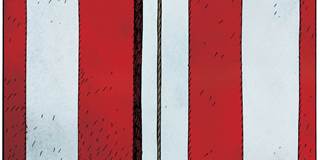Quantitative Easing and America’s Economic Rebound
There is no doubt that the US economy rallied strongly at the end of 2010. But much of the growth was due to the Federal Reserve’s policy of “quantitative easing,” which pumped up equity prices and thus consumption – and which will be phased out in 2011.
CAMBRIDGE – There is no doubt that the American economy rallied strongly at the end of 2010. But how much of that was due to the United States Federal Reserve’s temporary policy of so-called “quantitative easing”? And what does the answer mean for the US economy in 2011?



CAMBRIDGE – There is no doubt that the American economy rallied strongly at the end of 2010. But how much of that was due to the United States Federal Reserve’s temporary policy of so-called “quantitative easing”? And what does the answer mean for the US economy in 2011?